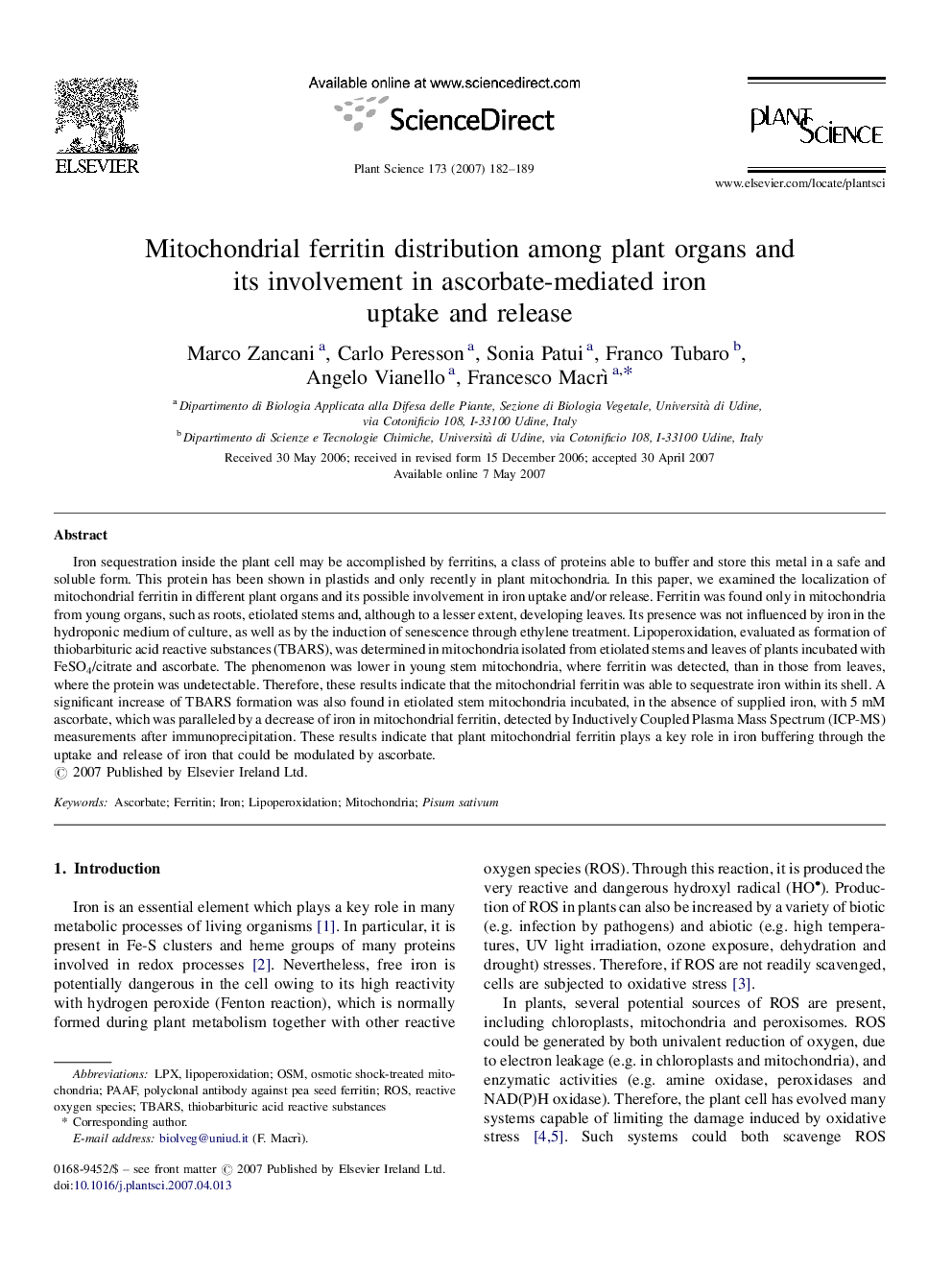| Article ID | Journal | Published Year | Pages | File Type |
|---|---|---|---|---|
| 2018563 | Plant Science | 2007 | 8 Pages |
Iron sequestration inside the plant cell may be accomplished by ferritins, a class of proteins able to buffer and store this metal in a safe and soluble form. This protein has been shown in plastids and only recently in plant mitochondria. In this paper, we examined the localization of mitochondrial ferritin in different plant organs and its possible involvement in iron uptake and/or release. Ferritin was found only in mitochondria from young organs, such as roots, etiolated stems and, although to a lesser extent, developing leaves. Its presence was not influenced by iron in the hydroponic medium of culture, as well as by the induction of senescence through ethylene treatment. Lipoperoxidation, evaluated as formation of thiobarbituric acid reactive substances (TBARS), was determined in mitochondria isolated from etiolated stems and leaves of plants incubated with FeSO4/citrate and ascorbate. The phenomenon was lower in young stem mitochondria, where ferritin was detected, than in those from leaves, where the protein was undetectable. Therefore, these results indicate that the mitochondrial ferritin was able to sequestrate iron within its shell. A significant increase of TBARS formation was also found in etiolated stem mitochondria incubated, in the absence of supplied iron, with 5 mM ascorbate, which was paralleled by a decrease of iron in mitochondrial ferritin, detected by Inductively Coupled Plasma Mass Spectrum (ICP-MS) measurements after immunoprecipitation. These results indicate that plant mitochondrial ferritin plays a key role in iron buffering through the uptake and release of iron that could be modulated by ascorbate.
